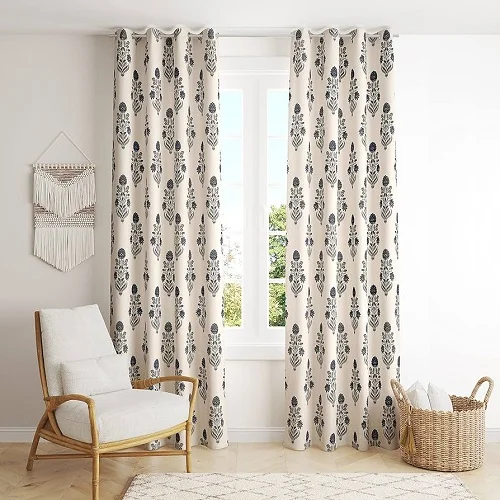
Curtains as Functional Decor: Maximizing Style and Efficiency
Curtains are an often overlooked element in interior design, yet they play a crucial role in enhancing both the aesthetic appeal and functionality of a space. Beyond their decorative aspect, curtains serve practical purposes that contribute to the overall comfort and efficiency of a room. Whether it’s providing privacy, controlling light, or insulating against external elements, curtains can be transformative elements that marry form and function.
One of the primary functions of curtains is to control natural light entering a room. The ability to filter and manipulate sunlight is a powerful tool in shaping the ambiance of a space. Sheer curtains, for instance, allow soft, diffused light to permeate a room, creating an ethereal and tranquil atmosphere. On the other hand, blackout curtains are designed to block out light entirely, making them an excellent choice for bedrooms or media rooms where light control is essential for a good night’s sleep or an optimal viewing experience.
Moreover, curtains contribute significantly to maintaining privacy within a living space. By choosing the right fabric and thickness, homeowners can create a barrier that shields the interior from prying eyes while still allowing a degree of natural light to filter through. This balance between privacy and illumination is crucial, especially in urban environments where proximity to neighbors is common.
The choice of curtain fabric also plays a pivotal role in enhancing a room’s insulation. During cold seasons, heavy and densely woven fabrics like velvet or woolen curtains can act as a barrier against drafts, helping to keep the room warm and cozy. In contrast, lightweight and breathable fabrics such as linen or cotton are ideal for warmer seasons, allowing for proper air circulation while providing a level of shade.
Beyond their functional benefits, curtains contribute significantly to the visual aesthetics of a room. The wide variety of fabrics, patterns, and colors available allows homeowners to express their personal style and complement the overall design scheme. For instance, bold and vibrant curtains can inject energy and personality into a neutral room, while subtle and neutral tones can create a calming and sophisticated ambiance.
Curtains also present an opportunity to play with texture and pattern. From classic solids to intricate prints, the choice of curtain design can be a subtle way to introduce visual interest without overwhelming the space. Additionally, the length and style of curtains can dramatically impact the perceived height of a room. Floor-to-ceiling curtains, for example, create an illusion of height and grandeur, making them a popular choice for rooms with lower ceilings.
In recent years, there has been a growing trend towards eco-friendly and sustainable design choices. This extends to curtains as well, with an increasing emphasis on using organic and recycled materials. Homeowners are now seeking curtains made from natural fibers like organic cotton, linen, or bamboo, not only for their aesthetic appeal but also for their low environmental impact.
The integration of smart technology into home design has also impacted curtains, introducing motorized options that offer convenience and energy efficiency. Automated curtains can be programmed to open and close at specific times, adjusting to the natural light cycle and contributing to energy savings by regulating indoor temperatures. This intersection of technology and traditional decor highlights the adaptability of curtains in modern living spaces.


